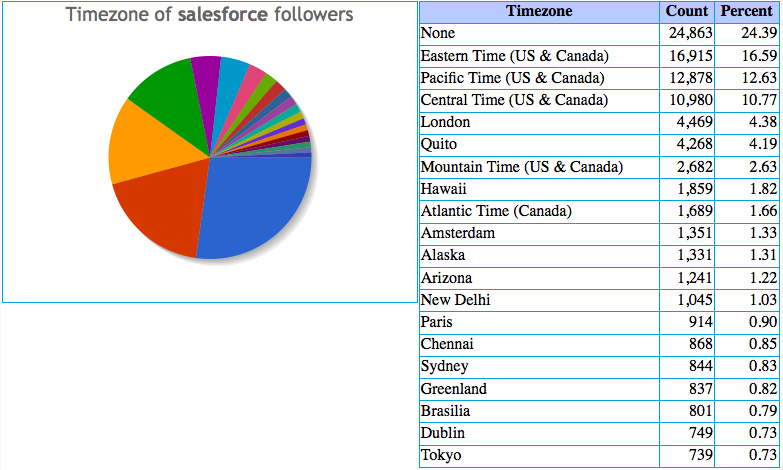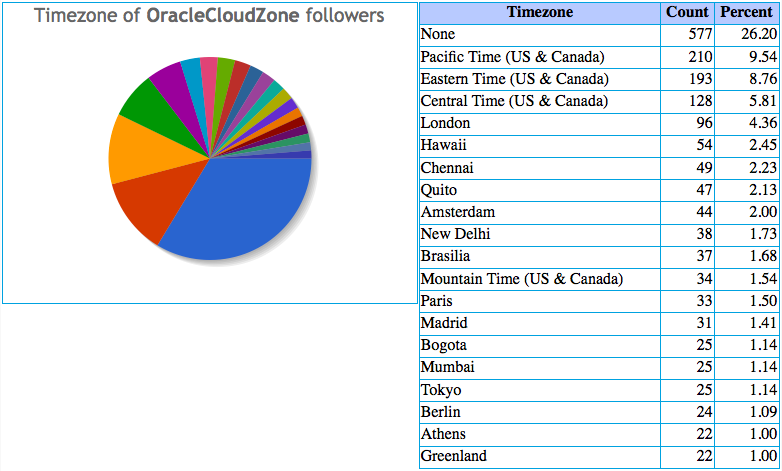In earlier post we talked about how the language of the twitter followers can be used to deduce global presence. We also discussed how it will not give a complete picture because many people may give English as their language in the profile even though they are located in different parts of the world. Obviously, another way to check the global presence is the location information in the profiles. However, note that the location information is not mandatory and also it is not a fixed list. So, it’s hard to get a good picture based on this as well. Also, location is a free form text that’s filled with city names, state names, country names making it extremely difficult to analyze without having a good data quality solution.
In addition to the location, there is also a field for timezone. Timezone, like language, is a based on a discrete list of values. While it seems to be mandatory right now, it probably was option in the past and hence there are many twitter users whose timezone info is blank.
Let’s look at the distribution of twitter followers by location for the three cloud companies which we have been so far analyzing.
In the above chart for salesforce, about 25% didn’t provide any location information. About 45% of the total (and 60% of those who provided info) are from within the US. UK is the next highest. Not knowing much about Quito I just wondered why there were so many followers from there for twitter and noticed that at least a few top users with maximum followers seem to actually belong to the US based on the location they specified. Then why their timezone is set as Quito? It is mostly because Quito is GMT-5.00 just like the East Coast USA. It’s likely that people just picked one of the several GMT-5.00 options available. Perhaps doing analysis based on Twitter Timezone field has to be taken with a pinch of salt if we want to make use of the location part of the timezone instead of just the GMT offset. May be the timezone picker should be based on a map.
Even more number of Workday users have no timezone info provided. We also see Quito coming right after London.
As discussed in part 1 of this post, Oracle Cloud seems to have more globally distributed following.




Pingback: Why is NetSuite more globally followed than Salesforce & Workday? | (Point(er(r)))